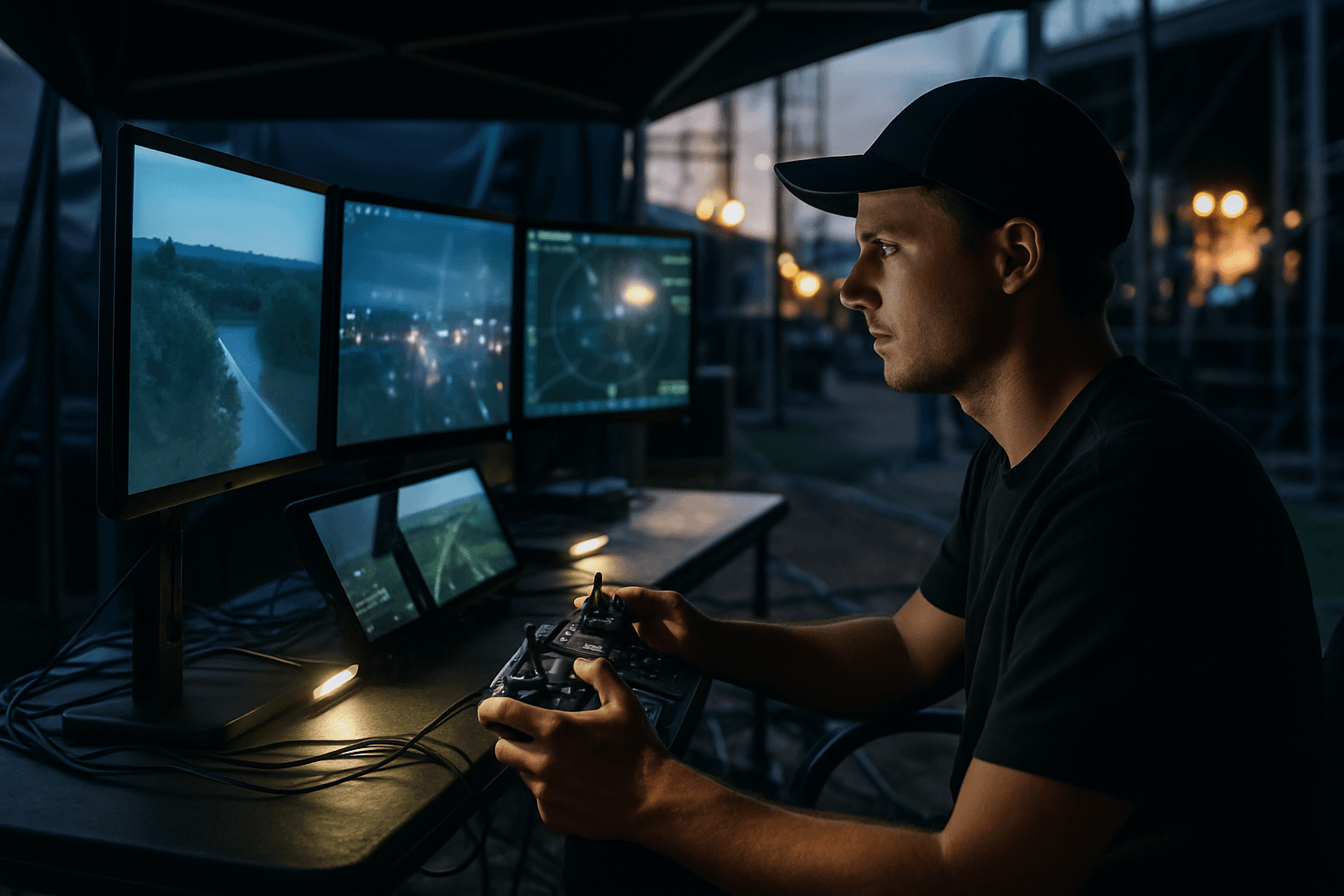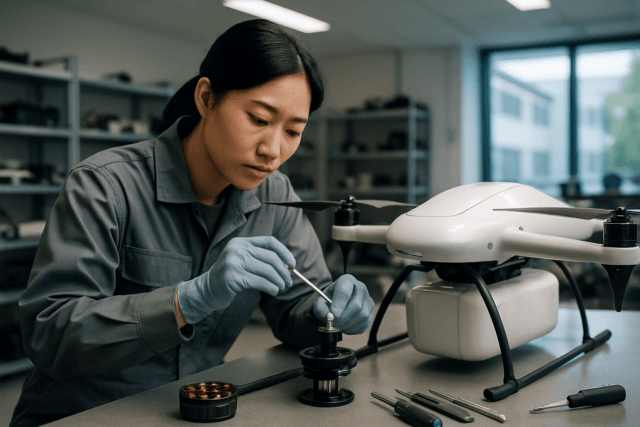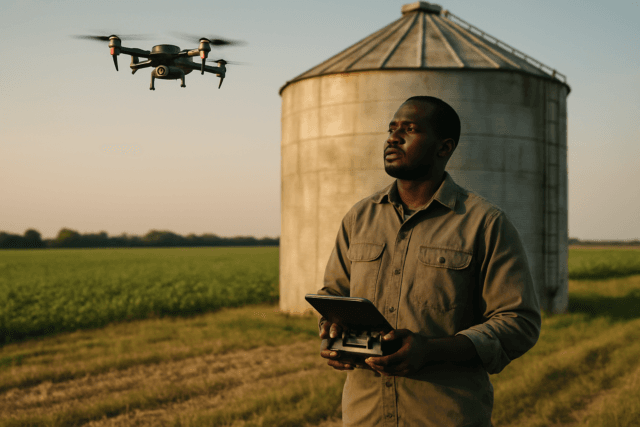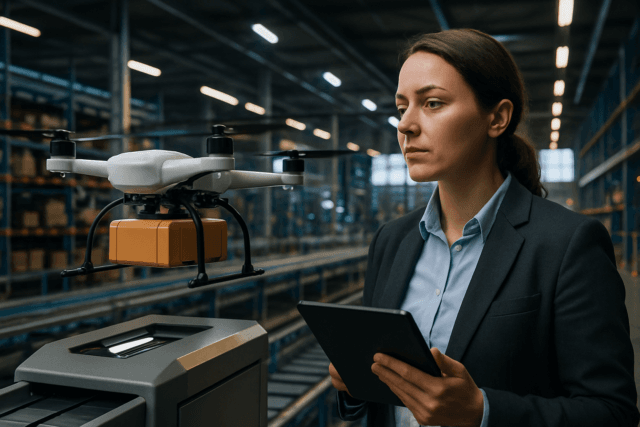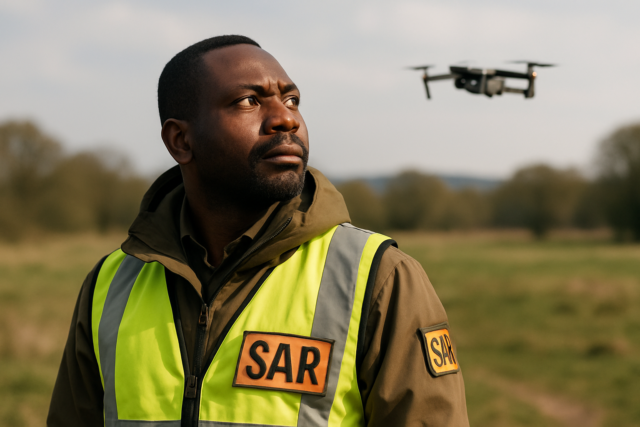The integration of drones into the entertainment industry has revolutionized visual spectacles, offering dynamic new possibilities from breathtaking aerial cinematography to synchronized light shows. Achieving these immersive experiences in real-time demands highly advanced piloting techniques, sophisticated technology, and stringent safety protocols. As drones become central to concerts, festivals, and public celebrations, the expertise required to operate them pushes the boundaries of aviation and artistry.
Foundational Skills for Advanced Piloting
At its core, advanced real-time drone piloting for entertainment builds upon a robust foundation of traditional piloting skills. Operators must possess exceptional manual dexterity, spatial awareness, and an innate understanding of aerodynamics. Beyond basic flight control, this includes proficiency in various flight modes, understanding drone mechanics, and the ability to react instantaneously to changing conditions. These foundational skills are critical, especially when considering the complex and often dynamic environments of live entertainment.
Advanced Piloting Techniques
Entertainment drone piloting extends far beyond simple remote control, incorporating a blend of manual skill and automated precision.
First-Person View (FPV) Piloting
First-Person View (FPV) piloting offers an immersive experience, allowing the pilot to feel as though they are inside the drone, seeing directly through its camera via goggles or a screen. This technique is crucial for capturing dynamic, fluid aerial footage in entertainment, such as tracking performers, navigating complex indoor venues, or weaving through elaborate sets. FPV drones are renowned for their precision control and visual feedback, enabling pilots to execute intricate maneuvers and adapt in real-time. For events, FPV drones can create stunning flythroughs, giving viewers a unique, almost in-person perspective of a venue or performance. Low-latency video transmission is paramount for FPV piloting, as minimal lag is crucial for reactive and precise control. Systems often utilize 5.8GHz frequency for video transmission, with some digital HD FPV systems achieving end-to-end latencies as low as 28 milliseconds.
Synchronized Swarm Control
Drone light shows, a captivating and eco-friendly alternative to traditional fireworks, are a prime example of advanced real-time drone piloting through synchronized swarm control. These shows involve dozens to thousands of drones, each equipped with LED lights, flying in precise, choreographed formations to create dynamic three-dimensional shapes and animations in the sky.
The complexity lies in coordinating every drone’s movement in unison. This is achieved through sophisticated software that transforms graphic designs into precise flight paths and communicates them to individual drones. A central computer on the ground tracks and manages the entire fleet, dictating movements to prevent collisions and ensure synchronized displays. While pre-programmed, real-time monitoring and control from a ground station allow operators to make on-the-fly adjustments to timing, formations, or individual drone behavior, especially in response to environmental changes or technical issues. Some systems even offer “one-click show launch” and automatic backup drone selection to ensure seamless performances. Swarm intelligence, inspired by natural collective behaviors, and AI techniques are also being explored for more advanced, adaptive control.
Motion Capture and Pre-Programmed Flight
For highly precise and repeatable aerial sequences, especially in film, television, or theatrical productions, motion capture and pre-programmed flight are indispensable. This involves meticulously pre-planning flight paths and movements using specialized software. Choreographers craft intricate flight paths, transforming drones into “sky-bound pixels” or dynamic camera platforms. The drones then execute these pre-programmed routines with exceptional accuracy. This technique minimizes human error in flight path deconfliction and ensures consistent performance across multiple takes or shows. However, even with pre-programming, real-time adjustments and monitoring remain crucial to account for variables like wind conditions or unexpected obstacles.
Real-Time Adaptive Control Systems
Beyond pre-programming, advanced entertainment drone operations utilize real-time adaptive control systems. These systems allow drones to dynamically adjust their flight paths and behaviors based on live data inputs. This is critical for performances where interaction with live elements (performers, other stage effects) or unpredictable environmental factors (wind gusts) requires immediate response. Integration of real-time kinematic (RTK) GPS technology provides centimeter-level positioning accuracy, enabling drones to maintain precise formations and execute complex movements even in challenging conditions. The ability to process real-time data, including GPS, sensor input, and communication signals, allows the control system to make continuous, minute adjustments to maintain the intended choreography.
Camera Operation and Cinematography
For live broadcasting and cinematic capture, advanced real-time drone piloting involves not only flying the drone but also operating its camera system. This requires a pilot to skillfully frame shots, adjust camera settings (zoom, focus, exposure) on the fly, and execute smooth, cinematic movements that enhance storytelling. Drones equipped with high-resolution cameras provide dynamic angles, enriching live broadcasts and offering immersive experiences. The ability to carry advanced payloads, including high-quality cameras, further transforms aerial filming for movies and events.
Technology Enabling Advanced Piloting
The sophisticated real-time drone operations seen in entertainment are made possible by a suite of cutting-edge technologies.
Low-Latency Transmission Systems
For real-time control and FPV piloting, low-latency video and data transmission systems are critical. The time delay between the drone’s camera capturing an image and the pilot seeing it on their display must be minimized for precise control. Delays less than 100 milliseconds are generally considered low enough for human interaction, but for advanced applications like FPV racing or intricate choreography, latencies of 30 milliseconds or even less are desired. These systems often employ robust wireless links, antenna diversity, and efficient video compression techniques (like H.264 slicing) to ensure continuous, clear, and responsive video feeds even in complex radio environments.
High-Precision GPS and RTK
Standard GPS can have a margin of error of several meters. Real-Time Kinematic (RTK) positioning technology, by utilizing a network of reference stations to provide real-time corrections, drastically improves GPS accuracy to centimeter-level precision. This high accuracy is fundamental for synchronized drone shows, where hundreds or thousands of drones must maintain exact positions relative to one another to form intricate patterns. RTK GPS allows for stable and precise flight, crucial for seamless integration of aerial footage and reliable navigation.
Advanced Flight Controllers and Software
The “brains” of entertainment drones are advanced flight controllers and specialized software. These systems manage each individual drone in a fleet and coordinate their movements. Features include:
- Automated Flight Path Optimization: Software automatically optimizes drone flight paths for flawless, synchronized performances.
- Collision Avoidance: Algorithms ensure drones maintain separation, adapting to changes in speed, direction, and environmental conditions to prevent mid-air collisions.
- Timecode Synchronization: Critical for multi-sensory experiences, timecode integration allows for perfect synchronization between drones, music, and other pyrotechnics or stage effects.
- User-Friendly Interfaces: Intuitive software with features like drag-and-drop interfaces simplifies the creation and execution of complex drone shows for operators.
Redundancy and Fail-Safe Mechanisms
Given the public nature of entertainment events, safety is paramount. Advanced drone systems incorporate multiple layers of redundancy and fail-safe mechanisms to minimize risks. These include:
- Navigation Redundancy: Multiple sensors (GPS, inertial measurement units) and estimators work in conjunction to provide reliable position, velocity, and orientation data.
- Automatic Backup Drones: Systems can select and deploy backup drones in real-time to ensure seamless, uninterrupted performances if a drone malfunctions.
- Geofencing: Dual, independent geofence systems establish invisible boundaries that prevent drones from straying outside pre-approved flight zones, triggering an automatic safe landing if a drone attempts to leave the area.
- Emergency Protocols: Drones are programmed for automatic landing or return-to-home functions if they lose connection or experience critical issues. Operators also have “Red Button” apps that can immediately interrupt the show and safely land all drones.
- Real-Time Monitoring: Operators continuously monitor battery levels, signal integrity, and other crucial parameters from ground control stations.
Safety, Regulations, and Ethical Considerations
The safe integration of drones into entertainment events is not just a technical challenge but also a regulatory and ethical one.
Airspace Management and Crowd Safety
Event organizers and drone operators must work closely with local aviation authorities to secure necessary airspace authorizations and waivers, especially when operating in controlled airspace or near sensitive areas. Establishing “no-fly zones” and maintaining safe distances between drones and audiences is essential to prevent accidents. Advanced systems often utilize dynamic soft geofencing and real-time air traffic monitoring to ensure drones remain within designated safe areas.
Regulatory Compliance and Waivers
Drone operations in entertainment are subject to specific regulations that vary by country. In the United States, for example, commercial drone pilots must obtain a Remote Pilot Certificate under Part 107 of FAA regulations. Drone shows involving swarm flights or night operations typically require additional waivers. Similar strict regulatory frameworks exist in the European Union under EASA and in other regions globally, with common requirements including remote identification, specific category permits for swarm flights, and rigorous pilot certification. Adherence to these regulations is paramount for ensuring safety and avoiding legal issues.
Emergency Protocols
Beyond automated fail-safes, comprehensive emergency preparedness is crucial. This includes thorough pre-flight checks, regular software updates, and rigorous operator training. Operators must be prepared to take immediate action in case of an emergency, with clear protocols for safely landing drones or aborting a show. The goal is to ensure that even in the rare event of a malfunction, public safety remains uncompromised. NASA is even developing advanced safety management systems that can predict hazards to drones before they occur, enhancing real-time risk mitigation.
Future Trends in Entertainment Drone Piloting
The field of entertainment drone piloting is continuously evolving. Future trends include:
- Increased Autonomy and AI: Further integration of AI and machine learning will lead to even more autonomous systems, capable of complex choreographies with less human oversight, and adapting to new or unexpected situations in real-time.
- Integration with AR/VR: Combining drone light shows with augmented or virtual reality experiences could create mixed-reality spectacles, offering audiences an even more immersive and interactive experience.
- Beyond Visual Line of Sight (BVLOS) Operations: Regulatory frameworks are evolving to permit BVLOS operations, which will open new opportunities for expansive and innovative aerial displays, though regulatory challenges remain.
- Miniaturization and Specialization: Drones may become even smaller and more specialized for specific entertainment applications, allowing for greater intricacy and precision in displays, both indoors and outdoors. Companies like Verity Studios are already leading in autonomous indoor drone systems for live events, demonstrating high reliability and creative potential.
Conclusion
Real-time drone piloting in entertainment settings represents a remarkable convergence of technological innovation, artistic vision, and stringent operational discipline. From the precision of FPV flight for cinematic capture to the intricate choreography of synchronized drone swarms, advanced techniques are continuously redefining live visual spectacles. These capabilities are underpinned by sophisticated low-latency transmission, centimeter-level GPS accuracy, intelligent flight control software, and robust fail-safe mechanisms. As the technology continues to advance, prioritizing safety, adhering to evolving regulations, and fostering expert human-machine collaboration will ensure that drones continue to elevate entertainment experiences to new, unimagined heights.

